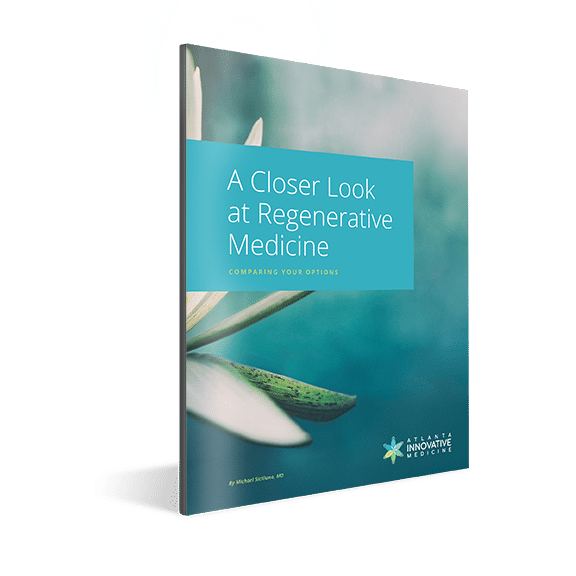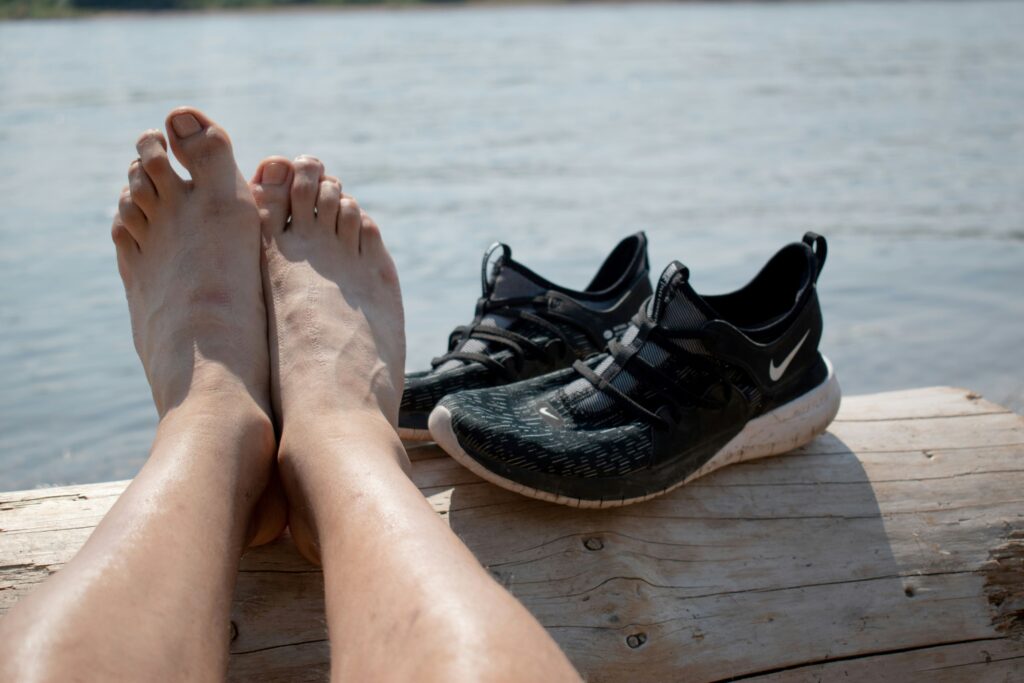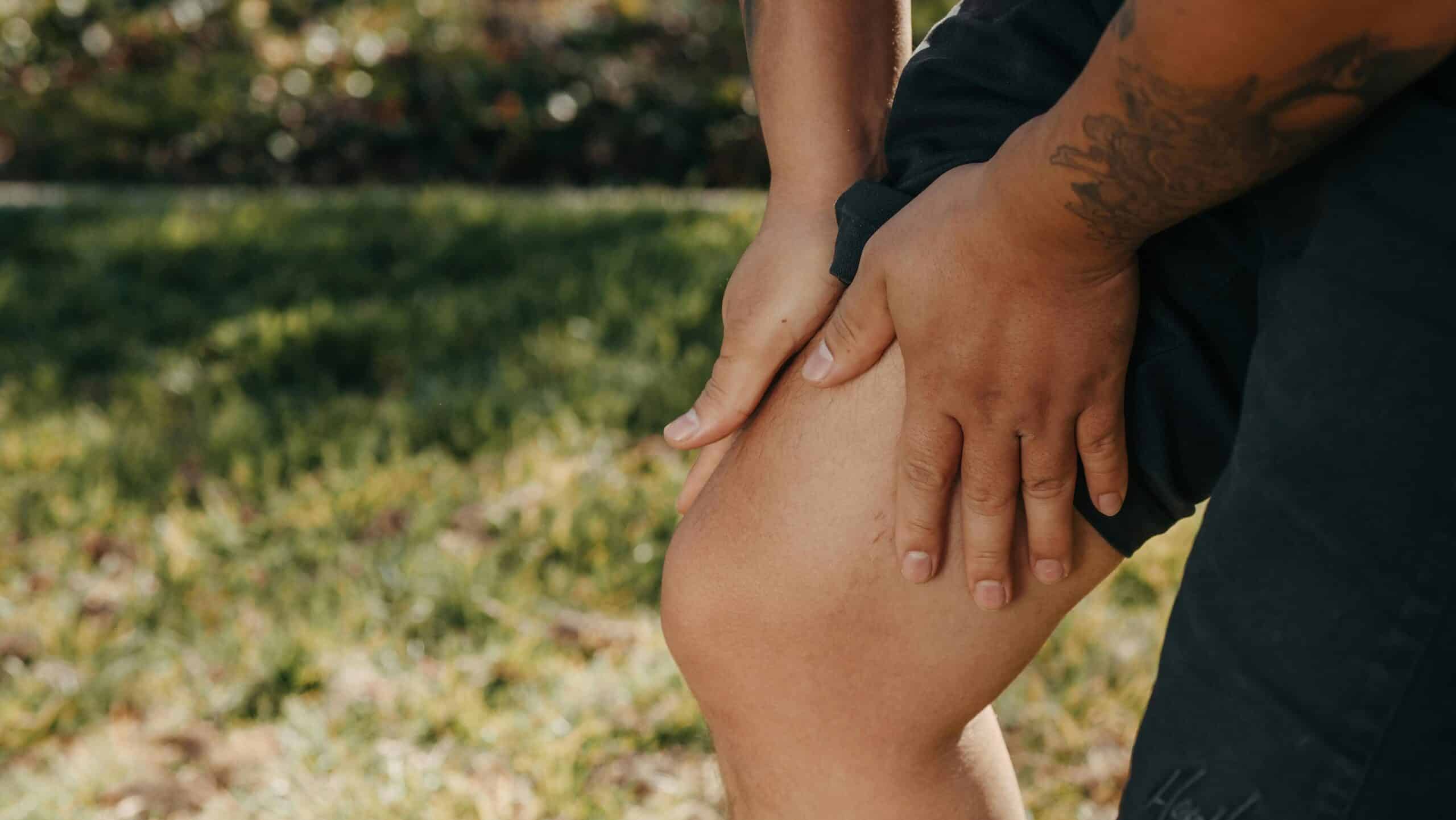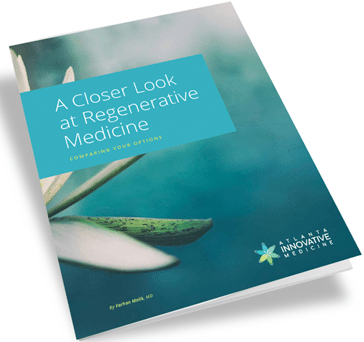By Farhan Malik, MD
Atlanta Innovative Medicine
Does your knee pain predict oncoming storms? Does a shift in barometric pressure have you reaching for the ibuprofen? If you notice your arthritis symptoms changing with the weather, you’re not alone.
While the exact weather conditions that trigger joint pain are still debated, there is a proven, well-documented correlation between weather changes and arthritis pain. Most experts agree that low temperatures, high humidity, and drastic shifts in barometric pressure all play a role in intensified arthritis pain for those who report being affected by the weather. Paying attention to the forecast, using the Arthritis Weather Index, and following a personalized pain relief plan can prevent weather-induced pain from sidelining you.
In this article, we’ll explore the resources available to predict weather-induced arthritis pain, like the arthritis weather index, the theories explaining why weather affects arthritis pain, and, more importantly, what you can do about it. We’ll explore lifestyle changes and treatment options that can help you find relief from arthritis pain. Effectively managing your arthritis pain can help you feel better in any weather, and Atlanta Innovative Medicine is here to assist by creating the best treatment plan for you.

Subscribe for Expert Insights and Our Ebook
A Closer Look at Regenerative Medicine: Comparing Your Options Learn about treatment options like Platelet Rich Plasma (PRP), Prolozone Therapy, and Stem Cell Therapy.
Predict Pain Levels with The Arthritis Index
One of the critical steps to managing any pain is understanding what makes it better or worse, and if you’re living with arthritis pain, that might mean paying close attention to the Arthritis Index. Accuweather’s Arthritis Index considers the conditions that increase most people’s pain: temperature, humidity, and barometric pressure. They provide daily ratings for the risk of increased pain, ranging from low to extreme. The Arthritis Index is a great tool to help you understand if weather conditions affect your pain, and if so, the predictions can help you plan your activities to prevent as much pain as possible during higher-risk periods.

Why Does Weather Affect Arthritis Pain?
How weather affects pain can vary for different people and different forms of arthritis. Studies have been inconclusive on exactly which weather affects joint pain and why, but plenty of evidence demonstrates a connection. Data suggests that the biggest weather-related culprits to increased pain are high humidity and low temperatures. Experts theorize that high humidity contributes to swelling while lower temperatures contribute to stiffness. A lower temperature makes the joint fluids thicker and tightens the muscles and tendons surrounding joints, worsening arthritis symptoms.
When high humidity and low temperatures converge, for example, on cold, rainy days, the effect on pain levels is exacerbated further. In addition to the physical factors noted above, experts believe the low mood and decreased activity levels typically associated with poor weather play a role in worsening arthritis symptoms as well.
Regardless of the inconclusive studies, your pain is real, and if you notice a difference in the weather, making a plan and taking proactive steps to mitigate the weather’s effects on your pain is the next step.

How Does Barometric Pressure Affect Arthritis?
In addition to low temperature and humidity, data indicates that changes in barometric pressure also play a role in worsening arthritis pain. Evidence shows that barometric pressure directly correlates to the pressure within our joints. When barometric pressure falls, it creates space for tissues around joints to swell and expand, which creates pressure on joints. This pressure on the joint leads to increased pain and stiffness.

Why is my body so sensitive to Barometric Pressure?
If you find yourself feeling like barometric pressure affects you more than others, there’s evidence to back this up, too. Those with migraine, diabetes, high or low blood pressure, osteoarthritis, or those ages 65 and older are the most susceptible to increased pain levels during storms. If you feel extra sensitive to barometric pressure changes, remember that understanding how weather changes affect you can help you take action to reduce pain during these periods.
Do these symptoms sound familiar?
Book an appointment to learn how we can help you identify and treat the cause of your symptoms.

How to Stop Weather-Induced and Barometric Pressure Pain in Joints
Picture this: On a Monday morning, you wake up already in some pain. You look at the Arthritis Index for the coming week and see that your risk of increased pain is high. You groan as you see lower temperatures, storms, and increased humidity on the way. You had so much planned, and painful flare-ups weren’t part of it. What can you do?
During a Higher-Risk Week, Take Steps to Manage any Additional Pain
Taking these steps when the arthritis weather index predicts a higher-risk period can help to reduce any increase in pain and inflammation:
- Dress warmly in cooler temperatures. Adding layers can help maintain body heat, preventing muscle tightening around joints.
- Stay dry. Stay indoors during precipitation or dress in reliable, waterproof outer layers.
- Plan activities accordingly. Rework your schedule to reduce activities that cause pain, and plan to continue with hydration, heat therapy, and low-impact movement as best as you can.

Implement Ongoing Lifestyle Changes to Improve Overall Joint Health
By implementing simple lifestyle changes, you can take charge of your overall joint health and minimize the effects of weather changes on joint pain. Here’s what you should do:
- Maintain a healthy weight. Shedding extra pounds helps to reduce pressure on your joints, especially those that bear the body’s weight, like hips, knees, and ankles.
- Stay active. Including regular, low-impact exercise in your routine can help strengthen the muscles that support your joints and increase flexibility, leading to healthier joints and reduced pain.
- Hydrate. Staying hydrated helps keep joints lubricated, which reduces friction and discomfort.
- Use heat therapy. Warm compresses and warm baths help to relax tense muscles, alleviating pain.
- It’s essential to follow an expert-guided treatment plan for arthritis. Having a pain management and arthritis treatment plan in place before bad weather hits is critical to reducing the severity and frequency of flare-ups. Our expert medical professionals at AIM are here to support you and create an arthritis treatment plan tailored to your needs.

Regularly checking the Arthritis Weather Index and paying attention to which weather changes affect you will help mitigate flare-ups during those periods. Pairing simple lifestyle changes with expert medical treatment will have you on your way to less pain and more life.
While you can’t rely on good weather, you can rely on AIM to help effectively treat your arthritis pain.
At Atlanta Innovative Medicine, we understand the impact that arthritis pain can have on your daily life, particularly when it fluctuates with the weather. While we can’t control the weather, we can help you control your pain using a noninvasive, integrative approach. We combine active and passive physical therapy, chiropractic care, and advanced regenerative techniques that tap into your body’s healing factors to restore your body’s tissues and improve joint health. Your arthritis treatment plan might include:
- Platelet-rich plasma (PRP) joint treatments. PRP can be a reliable treatment option for arthritis that can stimulate healing of the tissues surrounding joints, inhibit inflammation, and slow the progression of degeneration. Your blood contains platelets, which, in turn, contain large concentrations of growth factors. When we use PRP to treat pain, we take a small sample of your blood, run it through a centrifuge to extract the platelets, and inject those platelets into the damaged tissue, reducing inflammation and stiffness.
- Prolozone Therapy. Prolozone therapy for arthritis uses an ozone injection technique to stimulate fibroblastic joint repair, potentially working to reconstruct weakened or damaged tissues around or inside joints. Prolozone therapy can stimulate the body’s healing mechanism to reduce inflammation, aid cartilage regeneration, and boost collagen production. Reduced inflammation allows for better circulation, letting nutrient-rich blood flow unimpeded to damaged tissues. Prolozone therapy can decrease pain, increase range of motion, and stabilize joints by using your own body’s healing mechanism.
- Highly specific, image-guided procedures that use adipose tissue concentrate to help increase cartilage and relieve pain, swelling, and loss of movement. During this therapy, we extract a small amount of fat from your abdomen or buttocks containing adipose tissue. Adipose tissue has a large concentration of stem cells and other regenerative elements, such as exosomes (which facilitate communication between cells), cytokines (proteins that attach to cells and signal for them to undertake repair processes), and growth factors. We concentrate these growth factors, cytokines, exosomes, and stem cells and inject the solution into the treatment area.
If you’re seeking a holistic approach to managing arthritis that doesn’t just relieve arthritis pain but minimizes future degeneration, Atlanta Innovative Medicine is your trusted partner. Our team of highly skilled medical doctors, chiropractors, physical therapists, nurse practitioners, and staff are ready to create an arthritis treatment plan that will have you on your way to experiencing less pain and more life. Please call our friendly staff at 770.416.9995 to schedule your free consultation today.
Feel the AIM difference, regardless of how it feels outside. Contact us today to schedule a consultation, and take the first step to keeping arthritis pain manageable in any weather.
Quizzes
Are you a candidate for Regenerative Medicine?
Regenerative medicine can be an effective therapy and treatment option for lasting pain relief for a variety of conditions like osteoarthritis of the knee, hip or shoulder; ACL or meniscus tears; tennis or golfer’s elbow; chronic neck and back pain; and more.
Is it right for you and your condition? Take 1 minute to answer a few “yes or no” questions that help to assess if you might be a candidate for PRP, stem cell or other nonsurgical regenerative treatments.
Are You a Stem Cell Candidate for Your Joint or Spine Damage?
Are you a candidate for Platelet Rich Plasma (PRP) Therapy?
Do I have nonsurgical options for my injured or aging joints?
Take the Pain Medications Risk Quiz

Regenerative Medicine.
Reimagined
- Advanced hybrid therapies, including Mesenchymal Stem Cell therapy combined with different mechanisms of action that synergistically come together to support ultimate healing
- More powerful PRP that’s customized, amplified and personalized
- Therapies delivered by an experienced, compassionate team comprised of multidisciplinary experts in traditional and alternative medicine working as your team: Medical Doctors, Nurse Practitioners, Physiotherapists and Chiropractors
- Advanced training through the American Academy of Orthopedic Medicine, the American Osteopathic Association of Prolotherapy Regenerative Medicine, and more
All content of this page is for informational purposes only and is not intended to serve as a substitute for the consultation, diagnosis, and/or medical treatment of a qualified physician or healthcare provider. Individual results may vary. Your medical professional can explain all the risks and potential benefits of any therapy based on your specific circumstances. At this time regenerative therapies are not FDA approved. Neither Atlanta Innovative Medicine nor its physician affiliates promise regenerative therapies as a cure for any condition, disease, or injury.
Other Atlanta Areas We Service:
© 2024 Atlanta Innovative Medicine, LLC. All Rights Reserved. AIM Scholarship Opportunity








